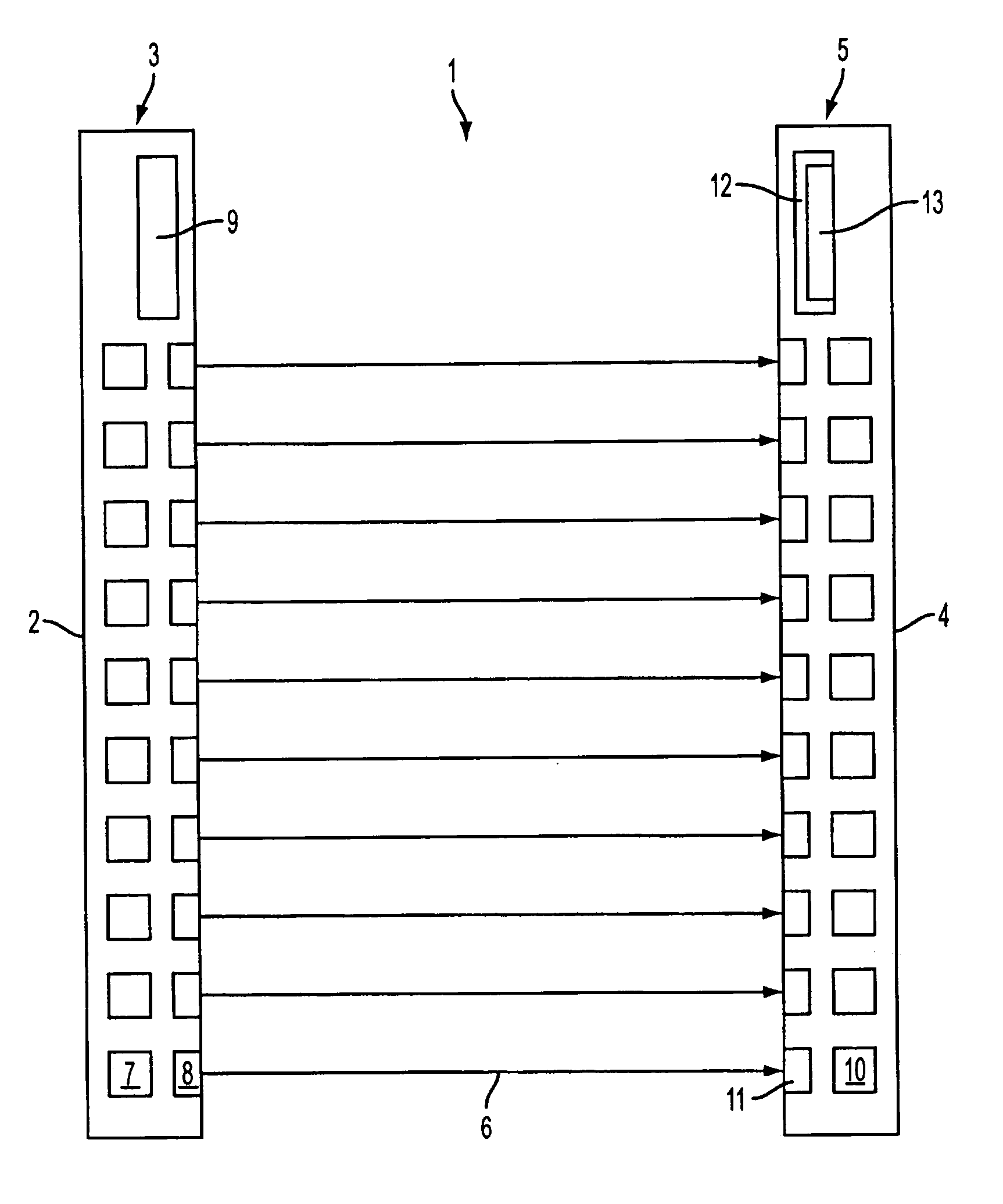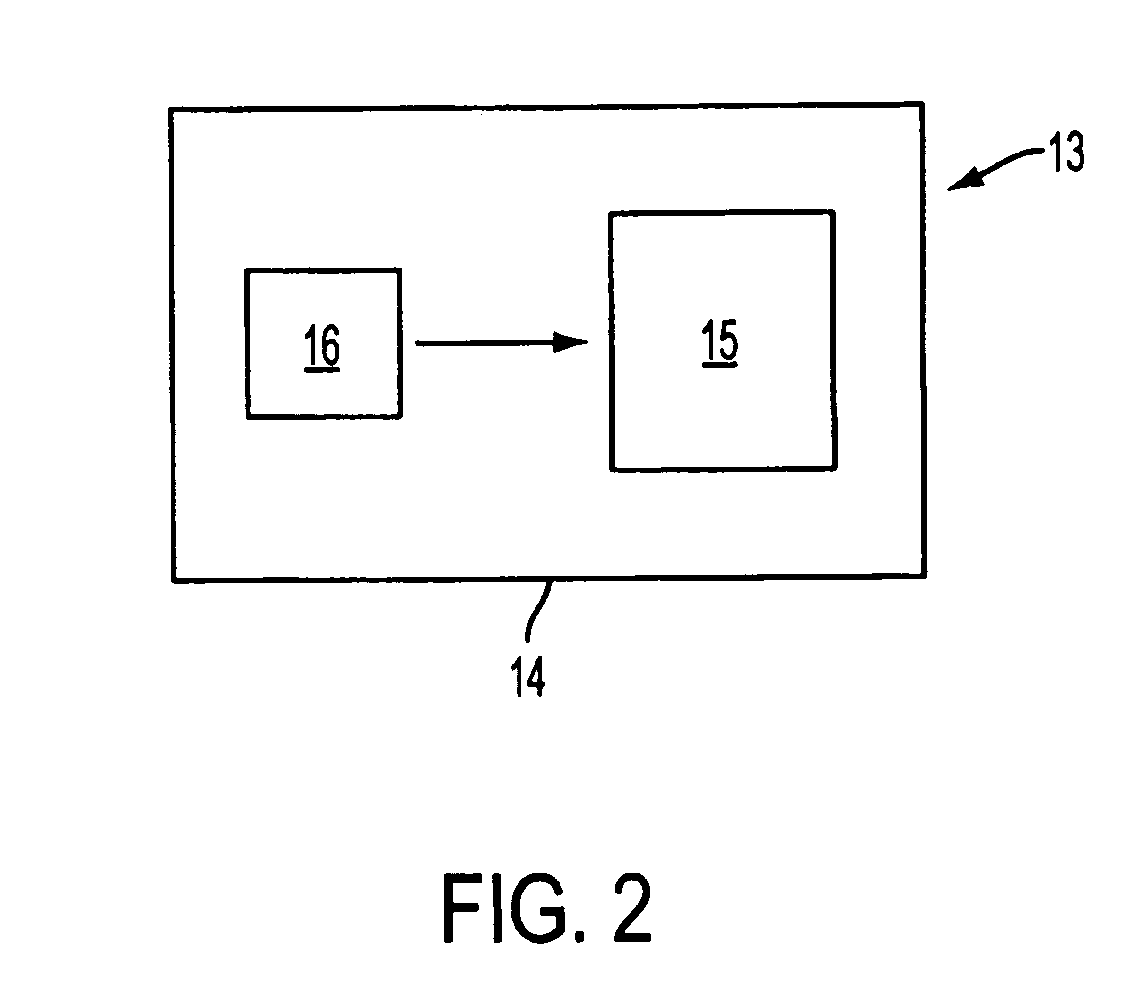Method for processing receiver signal and optical sensor
a receiver signal and optical sensor technology, applied in the field of processing receiver signals and optical sensors, can solve the problems of undesirable reduction of the detection sensitivity of the light grid, the disadvantage of analog circuits of this type, and the inability to detect external interference, so as to achieve the effect of increasing the detection sensitivity of the optical sensor
- Summary
- Abstract
- Description
- Claims
- Application Information
AI Technical Summary
Benefits of technology
Problems solved by technology
Method used
Image
Examples
Embodiment Construction
[0031]FIG. 1 shows a design of an optical sensor embodied as light grid 1 for monitoring an area to be monitored. The light grid 1 comprises a transmitting unit 3, integrated into a first housing 2, and a receiving unit 5 that is integrated into a second housing 4. The transmitting unit 3 and the receiving unit 5 are positioned on opposite edges of the area to be monitored.
[0032] The transmitting unit 3 comprises an arrangement of transmitters 7 for emitting light rays 6. The transmitters 7 preferably are embodied as identical light-emitting diodes, disposed at a distance next to each other, wherein the transmitters 7 are preferably arranged equidistant along a straight line. Installed downstream of each transmitter 7 is a transmitting optic 8 which forms a beam with the transmitting light rays 6. The respective transmitting optic 8 is installed behind an exit window, not shown separately herein, in the front wall area of the housing 2. The transmitters 7 for this embodiment emit t...
PUM
 Login to View More
Login to View More Abstract
Description
Claims
Application Information
 Login to View More
Login to View More - R&D
- Intellectual Property
- Life Sciences
- Materials
- Tech Scout
- Unparalleled Data Quality
- Higher Quality Content
- 60% Fewer Hallucinations
Browse by: Latest US Patents, China's latest patents, Technical Efficacy Thesaurus, Application Domain, Technology Topic, Popular Technical Reports.
© 2025 PatSnap. All rights reserved.Legal|Privacy policy|Modern Slavery Act Transparency Statement|Sitemap|About US| Contact US: help@patsnap.com



